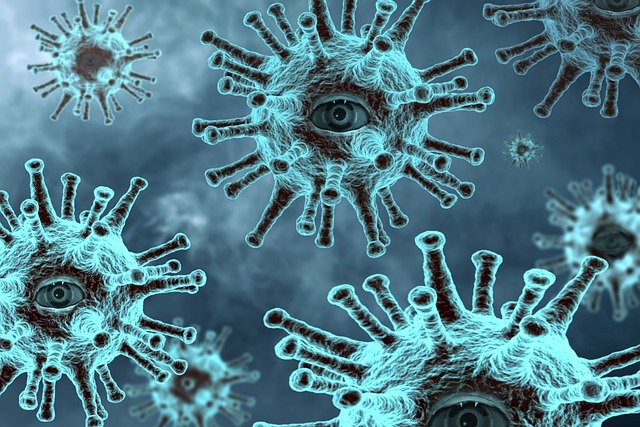COVID-19: Is carbon monoxide the key to understanding?
Image by Syaibatul Hamdi from Pixabay
Air pollution seems to be a catalyst for the seriousness and lethality of Covid-19.
It is indeed true that Covid-19 struck during the heating season when air pollution is at its worst and homes are less well ventilated than in summer, as do many other viruses like influenza and the RS virus with babies. However, so far the pollution researchers only looked at NOx and fine dust, but they neglected the most toxic component of urban air pollution, carbon monoxide (or CO) that weakens the immune system and makes us an easy target for viruses and bacteria.
And there is more because during the past decade research has shown that the minute quantities of ‘endogenous’ CO that our body produces (about 10 ml per day), are not simply a waste product of our liver and spleen, but perform essential functions in important physiological in biological processes inside our bodies.
And these critical processes can be seriously disturbed by the much higher concentrations of ‘exogenous’ CO that are inhaled with the polluted outside air. That’s probably what also weakens our immune system. For comparison: the normal concentration of endogenous CO in our body is around 2-4 ppm (parts per million), while a scooter (which usually has no catalytic converter) will emit 1-2% CO in the exhaust gasses, which is equal to 10.000 – 20.000 ppm! No wonder, thus, that Covid-19 struck so fast and badly in the large cities in industrialized northern Italy! This may also be the case in large American cities where the exhaust gasses of heating installations in large buildings are emitted near or at street level.
And there is still more because it is known that inhalation of low concentrations of 50 ppm CO or less can improve the condition of patients with inflammatory lung diseases.
And it has also been discovered that our immune system can do that trick with the help of the enzyme heme-oxygenase HO-1, which produces CO from the heme in red blood cells. The surprising fact is that our bodies can locally produce a potent killer of bacteria and viruses from red blood cells! And that, by the way, is why you have anemia and are exhausted after an infectious disease and why the cannibalized red blood cells tend to clot together and give you thrombosis. Every advantage has its disadvantages.
But this neat natural mechanism of the immune system to kill viruses in the lungs of Covid-19 patients is brutally disrupted by giving oxygen or mechanical ventilation. The CO is pushed out of the lungs into the blood and from there it is transported into deeper tissues and vital organs where it starts to disturb essential processes. The immune system immediately responds by producing even more endogenous CO to protect the inflamed lungs, which is also removed by the oxygen and transported into the body. This process quickly develops into an ‘immune storm’ with life-threatening complications for the patient, including serious after-effects. This is why doctors report that the condition of many Covid-19 patients suddenly deteriorates after receiving oxygen because that ignites a vehement reaction of the immune system. This reaction also changes the composition of the blood, which in turn will cause false readings of pulse-oxymeters, and thus give a wrong impression of the patient’s condition.
A way to stop this dangerous response of the immune system is to add CO to the inhaled or ventilated oxygen. But this may even worsen the already negative side-effects of the excess of endogenous CO. So the most logical way is thus to decrease or even stop the immune reaction by inhibiting the heme-oxygenase HO-1 enzyme with a simple and cheap zinc compound, like zinc acetate or zinc citrate.
It is thus necessary to check the CO level in patients’ lungs with a breath analyzer before it is decided to give oxygen. If that level is well above the normal concentration of 2-4 ppm, no oxygen should be given without also administering zinc. This will give the patients a much better chance to survive and win their fight against the virus, without complications and/or prolonged after-effects from poisoning by endogenous CO.
If we take the toxic and the healing effects of exogenous and endogenous carbon monoxide into account, many mysterious and missing pieces of the COVID-9 puzzle fall neatly into place and we get a much clearer picture of what is happening. It also opens new ways to prevent infection and help patients to overcome that infection and hopefully regain their health with relatively simple and cheap means.

René van Slooten is a leading ‘Poe researcher’, who theorizes that Poe’s final treatise, ‘Eureka’, a response to the philosophical and religious questions of his time, was a forerunner to Einstein’s theory of relativity. He was born in 1944 in The Netherlands. He studied chemical engineering and science history and worked in the food industry in Europe, Africa and Asia.The past years he works in the production of bio-fuels from organic waste materials, especially in developing countries. His interest in Edgar Allan Poe’s ‘Eureka’ started in 1982, when he found an antiquarian edition and read the scientific and philosophical ideas that were unheard of in 1848. He became a member of the international ‘Edgar Allan Poe Studies Association’ and his first article about ‘Eureka’ appeared in 1986 in a major Dutch magazine. Since then he published numerous articles, essays and letters on Poe and ‘Eureka’ in Dutch magazines and newspapers, but also in the international magazines ‘Nature’, ‘NewScientist’ and TIME. He published the first Dutch ‘Eureka’ translation (2003) and presented two papers on ‘Eureka’ at the international Poe conferences in Baltimore (2002) and Philadelphia (2010). His main interest in ‘Eureka’ is its history and acceptance in Europe and its influence on philosophy and science during the late 19th and early 20th centuries.

